Raised bed gardening is a rising trend among gardeners. They provide multiple benefits over traditional flat-ground gardening. If you are considering starting raised bed gardening, you should know whether you can put a raised bed garden on grass.
Generally, You can place your raised bed on grass as long as there is enough soil to smother the grass. Otherwise, it will grow through the soil and destroy your raised bed garden. For shallow beds, remove the grass, smother it with cardboard or paper, and add soil to the bed.
In this article, I will discuss whether you should put your raised bed garden on grass and some mistakes you must avoid. So, keep reading.
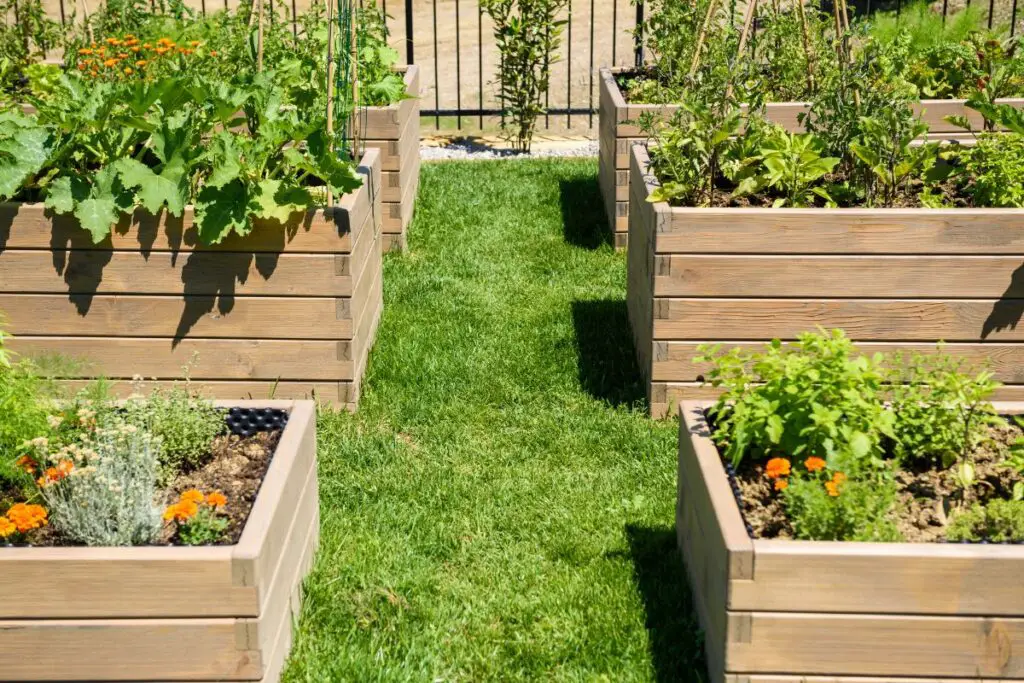
Can you put a raised bed garden on grass?
Building your vegetable bed in your yard is a great way to a sustainable life, but for that, you need to clear the weeds ad grass beneath the ground.
The grass is tenacious and spreads quickly to cover the entire space.
Unless you get rid of them, they will find a way to pop up in your newly designed planting bed and overpower the plants.
Some plant growers do not want to kill them, so they put their raised beds on grass.
If the soil inside the bed is piled up enough, it will not let the grass cause any problems.
However, grass may grow and fight with your plants for nutrients and water if you have a shallow raised bed.
For this, it is best to clear the grass.
Ways to build a raised bed on top of the grass
You can build your raised bed on the grass without having to remove or kill them.
Ensure that once the bed is ready, the grass does not grow through the soil you have filled the bed with.
Because if that happens, the grass will begin to cover the bed and fight for the nutrition you give your plants.
For this, they are a few things you need to keep in mind.
- First, you must mow the area where you want to keep the raised bed. Mow the grass as close to the ground as possible and eliminate the weeds that have grown around. You must adjust the mower, so the blades are at their lowest point.
- Once this is done, you must line the bottom of the bed with cardboard or newspapers. The thicker this base is, the more difficult the grass will find to grow through.
- Then fill the base with 6-12 inches of soil. Doing this will not let the grass grow over the soil and gradually kill it.
- As the cardboard or papers decompose, they will add nutrients to the soil.
If you want a shallow raised bed, remove the grass completely.
There are ways to clear the grass properly before building the raised bed.
This we will discuss in the below sections.
The primary two ways are:
- Clean the grass
- Kill the grass
There are different ways to kill or clean the grass; some are fairly simple but require time and patience.
While some give you quick results, they require some effort.
Whichever method you use, you will be rewarded with more space to set up your garden and less lawn to look after.
Also read: 17 Materials To Put In Bottom Of Raised Bed?
Removing grass for the raised bed
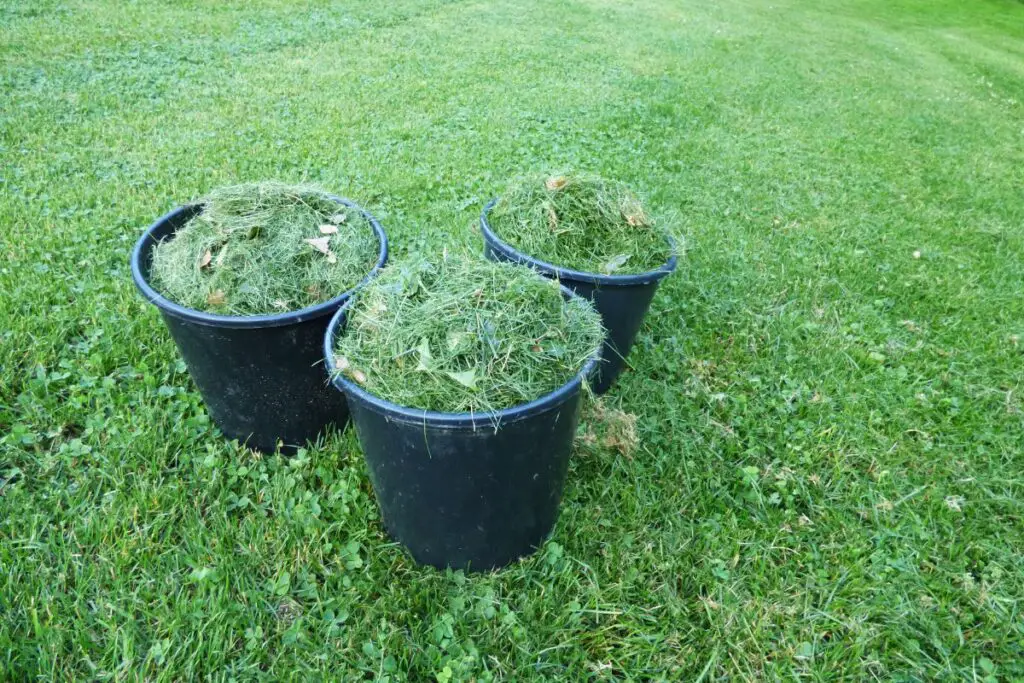
If you have a shallow bed, cleaning the grass is better.
Removing ensures they will not grow back in your raised bed, and the space will be clear to start the bed.
However, it will require some work.
1. Power Equipment
If you have power equipment, you can use them to remove grass easily.
You can also consider getting one if removing grass is something you need to do frequently.
Tiller
It is another type of equipment that is either electric or gas-powered.
They rip the grass from the roots, so you cannot replant them.
You can use the grass for composting to reuse them and add organic elements to the compost.
Sod cutter
Consider renting or buying a turf cutter.
It is an instrument used to remove grass.
It pulls grass away from the ground along with its roots and some soil.
You can replant the grass at any other spot if you want.
2. Scoop the grass out of the soil
You can remove the grass by pulling or scooping it out of the soil.
You will need:
- Stakes
- A shovel
- Twine or rope
First, mark the spot that needs clearing.
Then push 4 stakes at the corners to mark the edges of the bed.
And then connect the stakes with twine or rope.
Now, get the shovel, dig deep, and take out all the chunks of the grass.
The roots can go deep, so digging deep is a must.
This process will take time and a lot of hard physical work.
Do not rush; take time to finish this, as your body might get sore.
You can take out the soil from the roots of the grass and use it or fill the gaps with new soil.
You can use the grass as compost as it will add nutrients to it.
Level the ground, and put your raised bed on it.
Looking for gardening supplies? We have tested 100's of products before recommending them to you guys. Check out our best pick below:
| Image | Gardening Supplies | Best Price? |
|---|---|---|
 Top
Top Top
Top | Raised Garden Bed Kit | Check On Amazon |
 | XLUX Soil Moisture Meter, Plant Water Monitor, Soil Hygrometer Sensor for Gardening, Farming, Indoor and Outdoor Plants, No Batteries Required | No Results |
 Top
Top Top
Top | 82 Pcs Garden Tools Set and Extra Succulent Tools Set | Check On Amazon |
 | Joeys Garden Expandable Garden Hose with 8 Function Hose Nozzle, Lightweight Anti-Kink Flexible Garden Hoses, Extra Strength Fabric with Double Latex Core, (50 FT, Black) | No Results |
 Top
Top Top
Top | Dual Chamber Compost Tumbler | Check On Amazon |
 Top
Top Top
Top | Sunnyglade Plant Stakes | Check On Amazon |
 Top
Top Top
Top | Organic Cold Pressed Neem Seed Oil | Check On Amazon |
 Top
Top Top
Top | Mighty Mint Gallon :-Insect and Pest Control Peppermint Oil | Check On Amazon |
 Top
Top Top
Top | Scotts DiseaseEx Lawn Fungicide | Check On Amazon |
 Top
Top Top
Top | Jacks Classic 20-20-20 All Purpose Fertilizer | Check On Amazon |
 Top
Top Top
Top | 30,000 Seeds Pollinator Attracting Wildflower Mixture | Check On Amazon |
 Top
Top Top
Top | Survival Vegetable Seeds Garden Kit-Over 16,000 Seeds | Check On Amazon |
How to kill the grass (without using chemicals)?
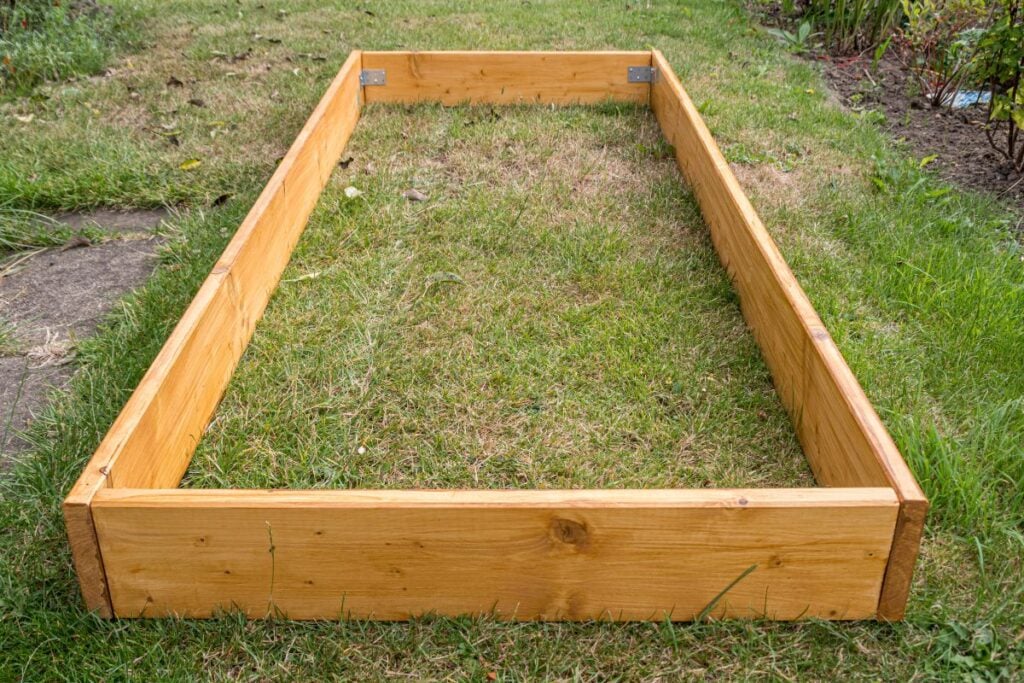
Many people prefer killing the grass without having to dig or remove it.
Let’s find out how we can do it.
1. Smother with cardboard or newspaper
Smothering grass means you stop it from growing, and eventually, they die.
The grass gets suffocated under the layer of cardboard in lack of air and light and dies.
First, you have to cut down the grass near the soil.
Next, cover the area with a dense layer of paper or cardboard.
This layer will smother the grass over time and gradually decompose in the soil.
Make sure the cardboard you choose has minimum print on it.
Do not use boards with waxy coatings.
It is suggested to moisten the board before filling it in the bed with oil.
For newspapers, avoid cultured prints and stick to black and white because the colors leech into the soil and affect the vegetables.
They will decompose quicker than cardboard but make sure whatever you use, and the pieces should overlap without any empty spots to prevent the grass from creeping in.
2. Organic weed killer
Chemical weed barriers can have some problems.
They are not environment-friendly, and they can leech into your vegetables.
Organic weed killers are perfect for you if you are one of the organic gardeners who prefer not to use chemical herbicides.
The chemical products can have side effects and may kill the beneficial plants.
The saltwater solution is one such way to kill the grass, but if you are not careful, it may also kill the surrounding plants.
Or, you can spray vinegar solutions on the grass, which will kill it, but again, do not use them on the other plants.
You can also use boiling water on the grass to kill them.
3. Raised bed liner
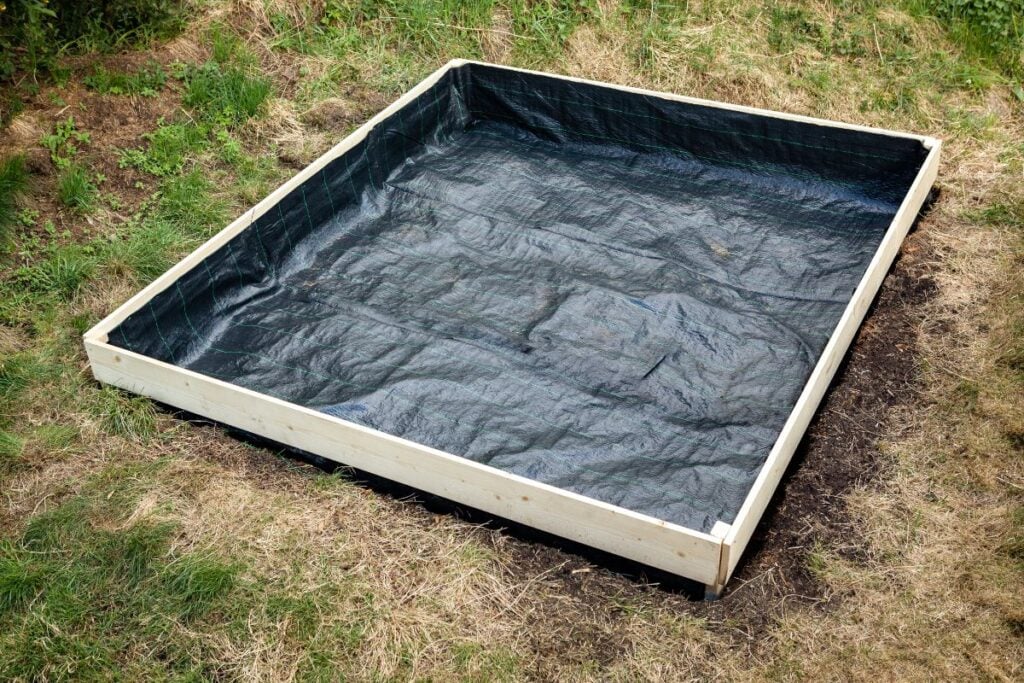
A garden liner is made of fabric or plastic that prevents the grass from growing into the soil.
But there might be some problems with using these.
Plastic garden bed liners tend to reduce drainage and lead to water accumulating at the base of the roots, which can lead to root rot.
4. Cover with plastic
This process requires time and patience.
This combines the energy from the sun and creates a greenhouse effect that kills the grass by simply burning it with heat.
Cover the entire area of grass with a plastic bag or sheet.
Put some stones on the corners so they can remain in place and not move.
Leave it like that for at least 4-8 weeks.
The sun will heat the atmosphere and the soil inside the plastic-covered area.
The plastic cover will trap the heat and will not let it escape.
As the ground underneath keeps heating up over time, the grass dies.
This method will work only in the warmer months.
In the colder months, it might not work, especially if the day is gloomy or the sunlight is not too intense.
5. Stack the soil high
Putting a thick layer of soil in your garden bed, at least 12 inches high, will not allow the grass to grow through it.
6. Lasagna gardening
This is done in the fall so that your raised bed is ready by spring.
This method also removes the grass by smothering them.
This method uses arranging layers of organic materials over the designated area to smother the grass and fill the soil with nutrients.
Cover the marked area with cardboard; on top of it, fill it with organic materials like compost, leaves, coffee grounds, manure, seaweed, spent leaves and flowers, etc.
It will cut the oxygen supply to the grass, kill them, and make the garden area rich and ready to grow plants.
Mistakes to avoid in raised bed gardening
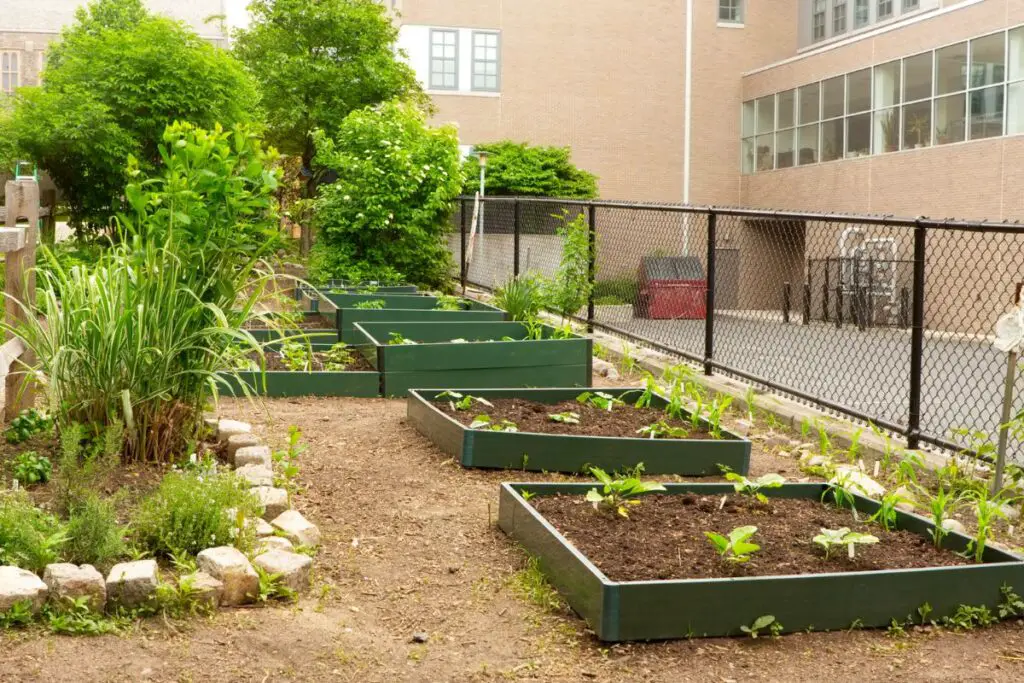
Growing a raised bed offers numerous advantages for better gardening, improved soil, drainage, accessibility, and more.
But some common mistakes that growers commit can derail all of your efforts.
Here are some mistakes we must avoid while planning and growing your raised bed.
1. Picking the wrong spot
The location of your raised beds is primary and highly important.
You need to plan the raised bed in an area that receives a minimum of six hours of full sunlight annually.
While planning it, ensure you understand which area receives what sunlight and where the surrounding trees cast their shades.
Do not build the raised beds beside walls or fences because they will not be reachable from all sides.
Also, do not choose where rainwater collects or falls from pipes or tunnels.
Also read: Can You Place A Raised Bed On Concrete? (Pros & Cons)
2. Raised beds should never be too wide.
Though getting a huge garden bed is tempting, you must remember the logistics.
The bed should never be more than four feet wide because if it is wider, you will not be able to reach the middle area for harvest, weed removal, watering, etc.
To avoid this problem, keep the beds narrow so that you do not have to step on them to tend to your crops because stepping on the soil makes them compact, destroying soil structure.
It is better to make multiple raised beds if you have space instead of making one big bed.
Also read: How Deep Should A Raised Garden Bed Be? (With 40 Examples)
3. Not planning for irrigation.
One common mistake we do is we do not plan the irrigation system.
You can grow your bed in any appropriate area, but it must be close to outdoor faucets so that you can water your beds with a garden hose attached to them.
Watering with cans can get quite tedious after a point, and overhead wagering can lead to fungal diseases in the plants.
Drip irrigation or soaker hoses are highly recommended for raised beds.
4. Building with the wrong material
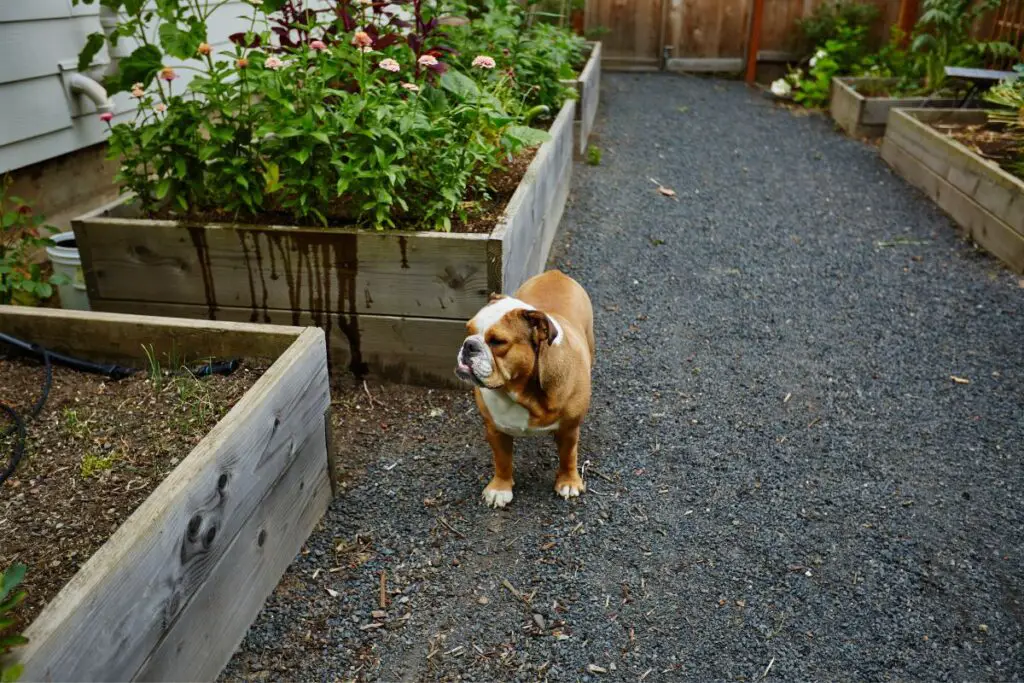
Many use pressure-treated woods to build their beds as they are durable, but you must know that they run a risk o harmful chemicals leeching into the garden soil.
You also must avoid materials that wear out soon and must rebuild the bed every year.
Stones, redwood, cedar, and oak make the bed durable and chemical-free.
Also read: 16 Best Types Of Wood For Raised Garden Bed (+Materials to avoid)
5. Insufficient nutrients in the soil
Using incorrect soil mix is highly harmful to the health of the plants in raised beds because they can tend to get compact and decrease aeration and drainage.
Use soil especially made for raised garden beds and mix a lot of organic materials like compost, perlite, etc., to keep it light, fluffy, and drains well.
Also read: 7 Best DIY Raised Bed Soil Mix: A Step-by-step Guide
6. Not mulching
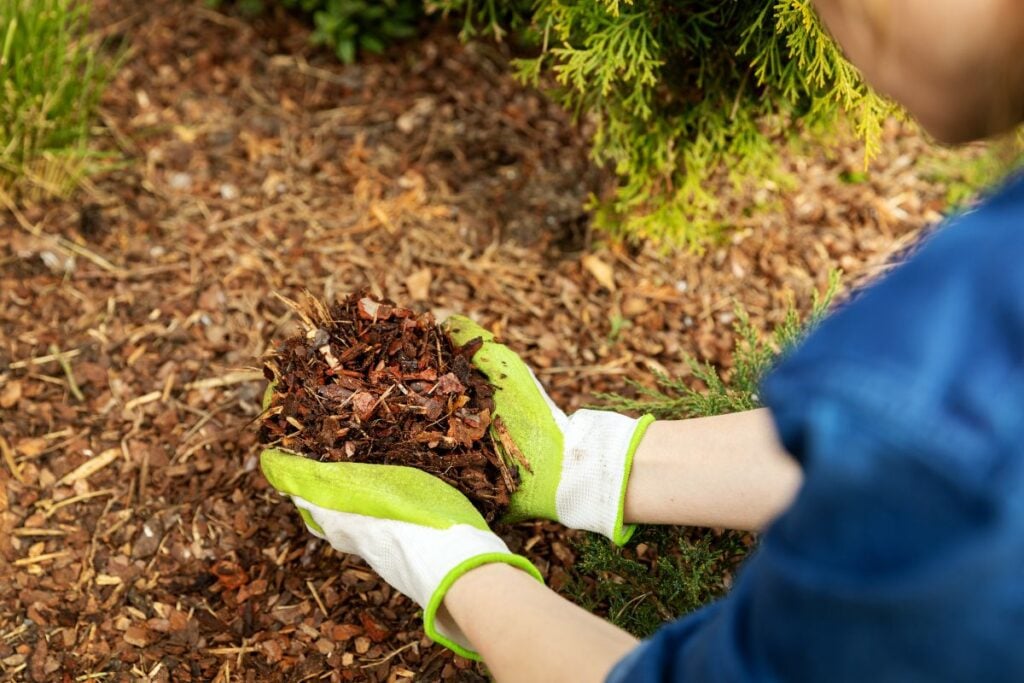
Mulching your raised garden bed is of utmost importance.
Many gardeners feel the garden beds will not have a chance to grow weeds, so they forget to mulch the soil.
Mulching does multiple benefits for garden beds.
It helps to lock in moisture in the soil and prevent water loss.
Mulching reduces the chances of weed growth in the soil by keeping it covered as weeds grow in open soil where they get light and water.
Mulching also helps the soil to keep temperatures in control.
In winter, it keeps the soil warm.
In the summer, it keeps it cooler.
Also read: Can You Put Mulch In A Raised Garden Bed? (Best Mulch+What To Avoid)
7. Not protecting the plants on the bed.
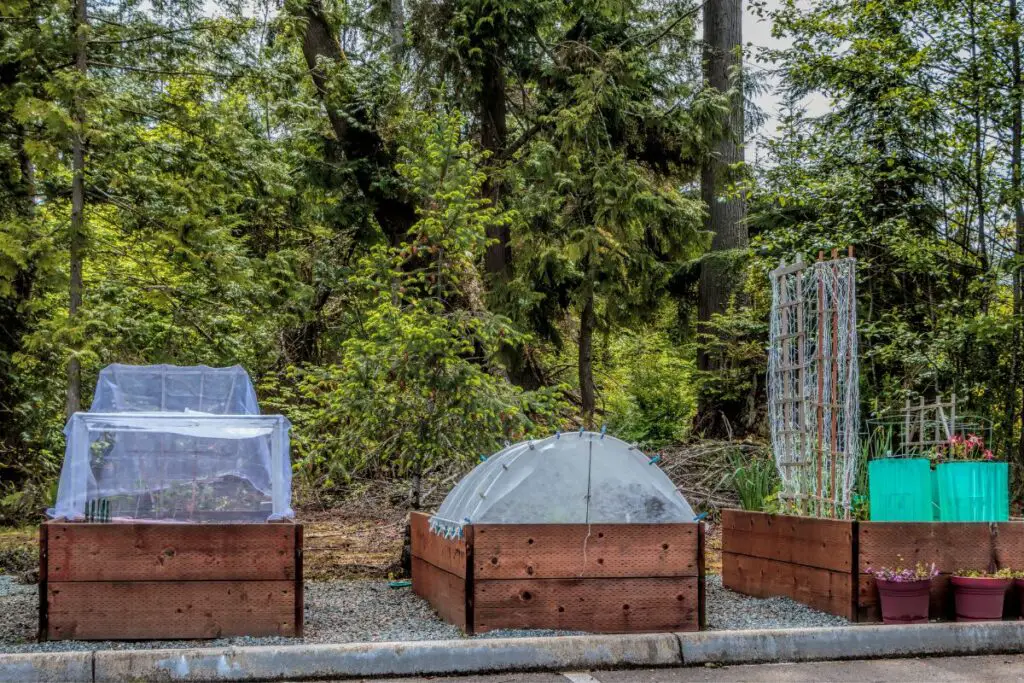
Once your garden bed is ready, you must protect it from small animals.
The best way to do that is by installing fencing, which you can remove when you tend to the garden.
Sprinkling some odor-based repellent on the soil also helps to keep the bugs at bay.
8. Selecting oversized plants
While choosing plants for the garden bed, remember the bed size and width.
If you plant a crop that takes up too much space, then the space for other crops will get confined.
It is better to plant dwarf varieties of plants and vegetables to incorporate more variety in the bed.
Final words
Now that we have discussed everything about playing with your raised bed on grass, you can get an idea about the procedure you want to go for. You can remove or kill them in any way you find will suit you the most.
Even though you can place the raised bed on the grass, there are prevention techniques that you must keep in mind. Otherwise, your raised bed will be covered by unnecessary weeds and grass.
Also, since I have discussed the common mistakes in raised bed gardening, I hope many of you will learn from them and not repeat them in your green zones.
Reference: ScienceDirect, American Society of Agronomy, Noble Research Institute, Soil for Raised Beds, Raised Bed Gardening.
